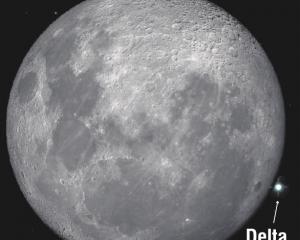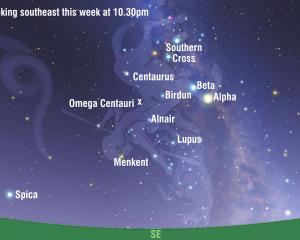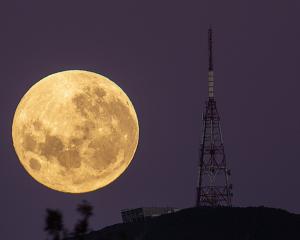
With the telescope hard at work capturing photons from remote parts of the cosmos, as is my habit I left the observatory building to gaze at the crystal-clear Mackenzie sky. While outside I set up a camera with a wide-angle lens and pointed it towards the south and opened the shutter for what ended up being a three-hour exposure.
The picture right is the resulting image. Above the observatory, you can see hundreds of curved lines in the sky. These are star trails. They are caused by the rotation of Earth. The trails are centred on a particular location which is called the South Celestial Pole. This is the point in the sky around which every star seems to rotate, taking twenty-three hours, fifty-six minutes and four seconds to do so. This period is known as a sidereal day. It is the time taken for Earth to rotate once on its axis. The 24-hour solar day is longer than a sidereal day because Earth is moving around the sun. The roughly four-minute difference is the extra time it takes for the sun to be in the same place in the sky. It is caused by Earth’s changing perspective as it moves around its parent star.
Growing up in the northern hemisphere, it was easy to spot the northern celestial pole. That’s because there’s a bright star, called Polaris, in the constellation Ursa Minor, located quite close by.
In the southern hemisphere, things aren’t quite so easy. By accident of nature, the southern celestial pole is in Octans. This is a constellation representing a navigational instrument the Octant. It was imaginatively named by the French astronomer Lacaille in 1752.
To put it bluntly, Octans is bereft of bright stars. The closest “bright” star to the southern celestial pole is Sigma Octantis. However, this star is barely visible to the naked eye even on a dark moonless night.
- Ian Griffin












